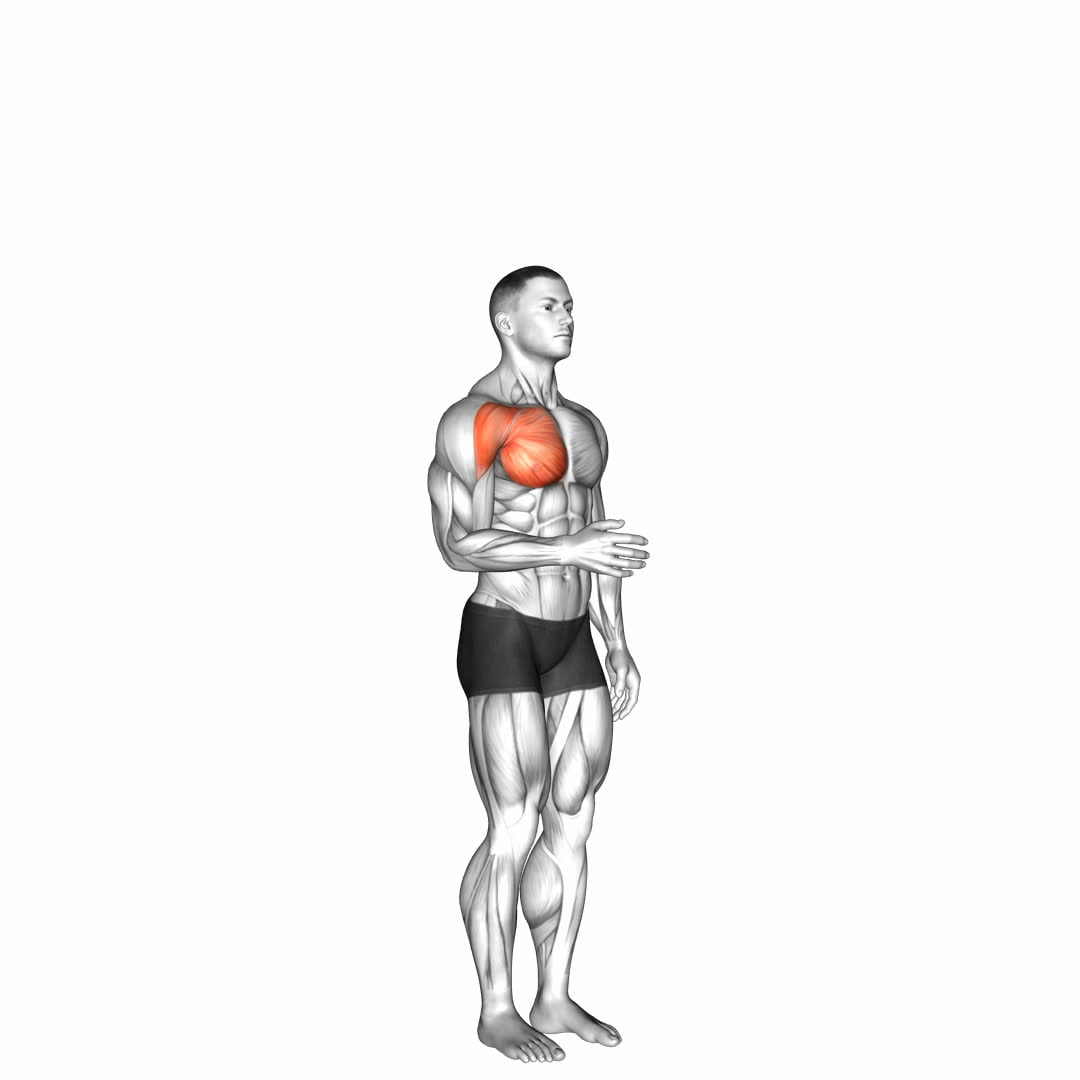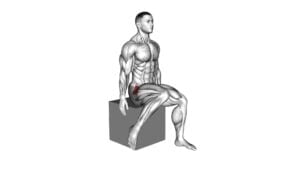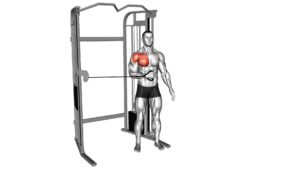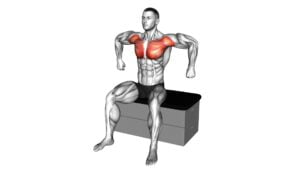Shoulder – Medial Rotation (Internal Rotation) – Video Exercise Guide & Tips

In this video exercise guide, you'll learn all about shoulder medial rotation (internal rotation). Discover the benefits of this movement and the equipment you'll need to perform the exercises.
Watch This Exercise Video
Follow our step-by-step guide to ensure proper form and avoid common mistakes. We'll also share tips for increasing your range of motion in medial rotation.
Plus, explore variations and progressions to challenge yourself. Get ready to strengthen and improve your shoulder mobility with these expert tips and techniques.
Key Takeaways
- Improved range of motion in shoulders
- Enhanced shoulder mobility
- Injury prevention, such as rotator cuff tears
- Importance of proper form and technique
Benefits of Shoulder Medial Rotation
You can experience several benefits from incorporating shoulder medial rotation exercises into your workout routine. Shoulder mobility is crucial for performing various upper body movements and exercises. By incorporating medial rotation exercises, you can improve the range of motion in your shoulders, allowing for better overall mobility.
One of the key benefits of shoulder medial rotation exercises is injury prevention. When your shoulders have limited mobility, it can increase the risk of injuries, such as rotator cuff tears or impingement syndrome. By regularly performing medial rotation exercises, you can strengthen the muscles surrounding the shoulder joint, improving stability and reducing the likelihood of injury.
Additionally, shoulder medial rotation exercises can help correct imbalances in your upper body. If you have tight chest muscles or rounded shoulders, incorporating these exercises can help counteract these issues by stretching and strengthening the muscles involved in medial rotation.
Incorporating shoulder medial rotation exercises into your workout routine can have a positive impact on your overall shoulder health. It can improve shoulder mobility, prevent injuries, and correct imbalances in your upper body. Remember to consult with a qualified fitness professional or medical provider before starting any new exercise program to ensure proper form and technique.
Equipment Needed for Medial Rotation Exercises
To perform medial rotation exercises for your shoulders, you'll need minimal equipment. Here are three items that can enhance your workout and help you achieve optimal results:
- Resistance bands: These versatile bands provide external resistance to strengthen your muscles during medial rotation exercises. They come in different levels of resistance, allowing you to gradually increase the intensity of your workouts as you progress. Resistance bands are lightweight and portable, making them a convenient option for home workouts or when you're on the go.
- Dumbbells: Another effective tool for medial rotation exercises is dumbbells. They provide a more focused resistance and allow for a greater range of motion. Start with lighter weights and gradually increase as you build strength and stability in your shoulder muscles. Dumbbells can be easily found in most gyms or purchased for home use.
- Exercise mat: While not directly related to the exercise itself, an exercise mat is essential for providing comfort and stability during your workout. It can help prevent slipping and provide cushioning for your knees and elbows when performing exercises on the floor.
Step-by-Step Guide for Medial Rotation Exercise
To perform the medial rotation exercise, consistently incorporate the use of resistance bands, dumbbells, and an exercise mat into your workout routine. This exercise is crucial for improving shoulder mobility and maintaining proper function.
Before starting, it's essential to warm up your shoulders properly to reduce the risk of injury. Begin by performing some light cardio exercises, such as jogging or cycling, to increase blood flow and warm up your muscles. Then, incorporate dynamic stretches like arm circles and shoulder rolls to loosen up the shoulder joint.
Once you're adequately warmed up, you can proceed with the medial rotation exercise. Start by standing with your feet shoulder-width apart and holding a resistance band or dumbbell in one hand. Keep your elbow bent at a 90-degree angle and your upper arm parallel to the floor. Slowly rotate your arm inward, bringing your hand towards the center of your body. Hold this position for a moment before returning to the starting position. Repeat the exercise for the desired number of repetitions and then switch to the other arm.
Remember to maintain proper form throughout the movement and to breathe consistently. By incorporating the medial rotation exercise into your routine and ensuring a proper warm-up, you can reap the benefits of improved shoulder mobility and reduce the risk of injury.
Common Mistakes to Avoid During Medial Rotation
One common mistake to watch out for during medial rotation is failing to maintain proper form throughout the exercise. To ensure that you're performing the exercise correctly and avoiding these common mistakes, here are three key points to keep in mind:
- Overcompensating with other muscles: It's important to focus on using the muscles specifically targeted during medial rotation, such as the subscapularis and teres major. Avoid relying on other muscles, such as the biceps or deltoids, to perform the movement. This can lead to imbalances and limit the effectiveness of the exercise.
- Rushing through the movement: Take your time and perform medial rotation with control and precision. Rushing through the exercise can compromise your form and increase the risk of injury. Remember to maintain a slow and controlled motion throughout the entire range of motion.
- Neglecting shoulder flexibility exercises: Medial rotation relies on adequate shoulder flexibility. Neglecting exercises that improve shoulder flexibility, such as stretching and mobility exercises, can hinder your progress in medial rotation. It's important to incorporate these exercises into your routine to ensure optimal results.
Tips for Increasing Range of Motion in Medial Rotation
To increase your range of motion in medial rotation, incorporate stretching exercises that target the muscles involved in this movement, such as the subscapularis, teres major, and latissimus dorsi.
Additionally, focus on strengthening these muscles through exercises like internal rotation with resistance bands or dumbbells.
Stretching Exercises for Medial Rotation
To increase your range of motion in medial rotation, try incorporating stretching exercises into your shoulder routine. These exercises can help improve shoulder mobility and prevent injuries. Here are three stretching exercises that you can try:
- Sleeper Stretch:
Lie on your side with your affected arm bent at a 90-degree angle. Use your other hand to gently push your affected arm down towards the bed or floor. Hold the stretch for 20-30 seconds and repeat on the other side.
- Cross-Body Stretch:
Stand tall and extend your affected arm across your body. Use your other arm to pull the affected arm closer to your chest. Hold the stretch for 20-30 seconds and repeat on the other side.
- Doorway Stretch:
Stand in a doorway and place your affected arm on the door frame. Gently lean forward until you feel a stretch in your shoulder. Hold the stretch for 20-30 seconds.
Incorporating these stretches into your shoulder routine can help improve your medial rotation and promote overall shoulder health. Remember to consult with a healthcare professional before starting any new exercise program.
Strengthening Muscles for Rotation
To increase your range of motion in medial rotation, strengthen your muscles by incorporating targeted exercises into your routine. Shoulder mobility and stability are crucial for achieving optimal medial rotation. Strengthening the muscles that contribute to shoulder rotation can help improve your overall shoulder function and performance.
One effective exercise for strengthening the muscles involved in medial rotation is the seated internal rotation exercise. Sit on a bench or chair with your back straight and hold a resistance band or dumbbell in your hand. Keep your elbow bent at 90 degrees and your upper arm close to your side. Slowly rotate your forearm inward, towards your body, against the resistance. Pause briefly at the end of the movement and then slowly return to the starting position.
Incorporating exercises like this into your workout routine can help enhance your shoulder mobility and stability, ultimately increasing your range of motion in medial rotation. Remember to start with light resistance and gradually increase as your strength improves.
Proper Form and Technique
Improve your range of motion in medial rotation by focusing on proper form and technique. By following these tips, you can ensure that you're maximizing the benefits of proper form and avoiding common mistakes that can hinder your progress:
- Maintain proper posture: Stand tall with your shoulders relaxed and your spine aligned. This will help you engage the correct muscles and prevent unnecessary strain on your joints.
- Start with lighter weights: It's important to gradually increase the resistance as you build strength and improve your range of motion. Starting with lighter weights allows you to focus on proper form and avoid compensating with other muscles.
- Control the movement: Slow and controlled movements are key to targeting the muscles involved in medial rotation. Avoid using momentum or jerky movements, as this can lead to injury and limit your progress.
Variations and Progressions for Medial Rotation Exercises
Try incorporating different equipment and adjusting the resistance for a more challenging medial rotation exercise. There are several variations and progressions you can try to target your shoulder muscles in different ways and continue making progress in your training.
One option is to use a resistance band instead of dumbbells. This allows for a different type of resistance and can help activate your muscles in a slightly different manner.
Another variation is to perform the medial rotation exercise in a standing position, rather than seated. This engages the core muscles more and adds an element of balance and stability to the exercise.
If you're looking for a more advanced progression, you can try performing the exercise on an unstable surface, such as a stability ball. This requires even more core stability and control, making the exercise more challenging.
Additionally, you can increase the resistance by using heavier dumbbells or adding more tension to the resistance band.
Remember to always start with proper form and technique before progressing to more challenging variations.
Frequently Asked Questions
How Often Should I Perform Medial Rotation Exercises for My Shoulders?
To maximize the benefits of medial rotation exercises for your shoulders, it's important to consider the frequency of your workouts. Regularity is key.
By incorporating these exercises into your routine on a regular basis, you can improve the strength and flexibility of your shoulder muscles.
The exact frequency will depend on your individual goals and fitness level.
It's recommended to consult with a healthcare professional or a certified trainer to determine the optimal frequency for your specific needs.
Can Medial Rotation Exercises Help Alleviate Shoulder Pain?
Medial rotation exercises can be beneficial in alleviating shoulder pain. By targeting the internal rotation of the shoulder, these exercises help strengthen the muscles and improve the overall stability of the joint. Some of the best medial rotation exercises include:
- Dumbbell internal rotations
- Cable internal rotations
- Resistance band internal rotations
Incorporating these exercises into your routine can help reduce shoulder pain and improve your range of motion.
Always consult with a healthcare professional before starting any exercise program.
Are There Any Specific Warm-Up Exercises Recommended Before Performing Medial Rotation Exercises?
Before performing medial rotation exercises, it's important to engage in specific warm-up exercises. These exercises help prepare your shoulder muscles and joints for the movements involved in medial rotation. They increase blood flow, flexibility, and range of motion, reducing the risk of injury.
Additionally, warm-up exercises promote better muscle activation during the main workout, enhancing the benefits of medial rotation exercises, such as improved shoulder mobility and strength.
Can I Still Perform Medial Rotation Exercises if I Have a Shoulder Injury?
Yes, you can still perform medial rotation exercises even if you have a shoulder injury.
However, it's important to consult with a healthcare professional or a physical therapist before starting any rehabilitation exercises. They can assess your injury and provide you with specific exercises that are safe and suitable for your condition.
Proper guidance and supervision are crucial to prevent further damage and promote optimal healing.
Are There Any Precautions I Should Take When Performing Medial Rotation Exercises to Avoid Injury?
When performing medial rotation exercises, it's important to take precautions to avoid injury. To ensure your safety, follow these guidelines.
First, warm up properly to prepare your shoulder muscles for the exercise.
Second, start with light weights and gradually increase the resistance to avoid straining your muscles.
Third, maintain proper form and technique throughout the exercise to prevent any unnecessary stress on your shoulder joint.
Conclusion
In conclusion, shoulder medial rotation exercises are beneficial for improving the range of motion in the shoulder joint. By incorporating these exercises into your workout routine, you can strengthen the muscles involved in medial rotation and prevent injuries.
Remember to use proper form and avoid common mistakes to maximize the effectiveness of the exercise. Additionally, gradually increasing the range of motion and trying variations and progressions can further enhance the benefits of medial rotation exercises.

Author
Years ago, the spark of my life’s passion ignited in my mind the moment I stepped into the local gym for the first time. The inaugural bead of perspiration, the initial endeavor, the very first surge of endorphins, and a sense of pride that washed over me post-workout marked the beginning of my deep-seated interest in strength sports, fitness, and sports nutrition. This very curiosity blossomed rapidly into a profound fascination, propelling me to earn a Master’s degree in Physical Education from the Academy of Physical Education in Krakow, followed by a Sports Manager diploma from the Jagiellonian University. My journey of growth led me to gain more specialized qualifications, such as being a certified personal trainer with a focus on sports dietetics, a lifeguard, and an instructor for wellness and corrective gymnastics. Theoretical knowledge paired seamlessly with practical experience, reinforcing my belief that the transformation of individuals under my guidance was also a reflection of my personal growth. This belief holds true even today. Each day, I strive to push the boundaries and explore new realms. These realms gently elevate me to greater heights. The unique combination of passion for my field and the continuous quest for growth fuels my drive to break new ground.







